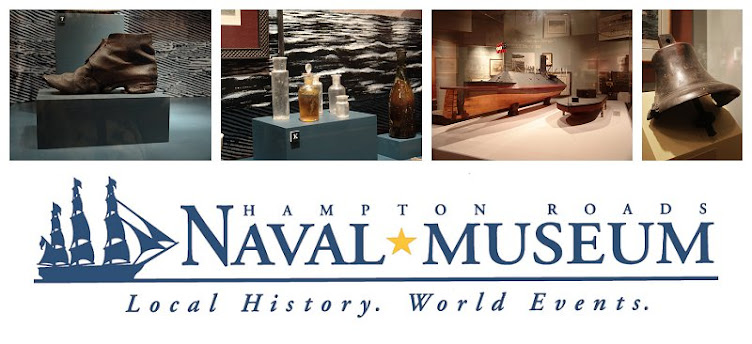Shown here is the Naval Museum's model of the ironclad CSS
Virginia, along with a piece of
Virginia's iron plate. Ship model builder John Ratclaff constructed the 1/4" to a 1'-scale model for the museum in 1984, and this model is the one of the centerpieces of the museum's Civil War gallery. Additionally, this particular piece of iron plate is one of the better examples of
Virginia's armor on display in any museum.
The armor plate itself is converted railroad rolling stock iron. Early in the war, a raid conducted by General "Stonewall" Jackson procured rails from the Baltimore & Ohio railroad line in northern Virginia. While usable rail went to support the South's rail infrastructure, the Tredegar Iron Works in Richmond received the damaged pieces. After receiving the rails, Tredegar's workers melted them down and hammered them into pieces. Each one- or two-inch-thick piece was fifty-nine inches long and eight inches wide.
As you can see in the photograph above, the armor has been pierced in three places. In these spots, workers hammered in bolts to connect the armor to either the ship's second layer of armor or to the planks of wood that backed up the armor. However, in
Ironclad Down: USS Merrimack-CSS Virginia, From Construction to Destruction, Carl Park noted that it is unclear what pattern
Virginia's designers had in mind for these holes. Other examples of
Virginia's armor remain at
Norfolk Navy Yard's Trophy Park, the
Portsmouth Naval Shipyard Museum, and the
Museum of Confederacy, and all have their own unique pattern of bolt holes. While there are not many pieces of
Virginia's armor remaining, Park remarked that there is enough written evidence from Tredegar's management and the ship's designers to suggest that there may have been no pattern at all. Thus, most drawings of
Virginia (such as the one shown above) are most likely incorrect because they show a straight, uniform pattern of bolts on the ship.



No comments:
Post a Comment